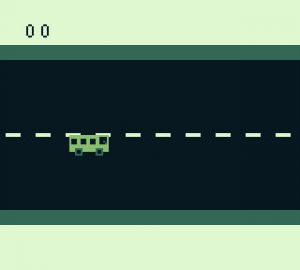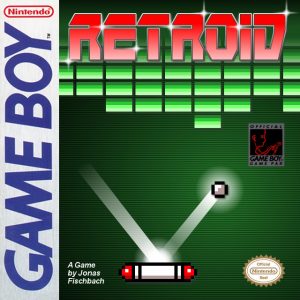Refresh Games are working on a Game Boy Color game named Formula Racing. The last sign of development was about a half year ago.
In Fatal Flame by Jaws-V Soft you need to hunt down fireflies with a flamethrower. The game is not very complex, but pleases for a couple of minutes.
The 8-bit Game Boy was sold between 1989 and 2003, but its architecture more closely resembles machines from the early 1980s, like the Commodore 64 or the NES. This talk attempts to communicate “everything about the Game Boy” to the listener, including its internals and quirks, as well as the tricks that have been used by games and modern demos, reviving once more the spirit of times when programmers counted clock cycles and hardware limitations were seen as a challenge.
The Nintendo Game Boy was an 8-bit handheld gaming console that competed with the SEGA Game Gear and the Atari Lynx. Compared to its competition, it had very little RAM (8 KB) and no color support (4 shades of gray at 160×144). It was succeeded by the Game Boy Color, which fixed this main shortcoming, but shared the same architecture. During the 14 year life span of the 8 bit Game Boy platform, game programmers kept understanding the hardware better and better, and continued finding new tricks for better graphics effects, such as sprite multiplexing, parallax and palette effects. This talk explains all the hardware details of the Game Boy: The programming model of the 8080/Z80-like LR35902 CPU, the system’s sound, timer and I/O functionality, and programming details as well as common tricks involving the graphics processor (“PPU”), which was specifically designed for LCD output. The listener will get a good understanding of 8 bit programming and creative programming on extremely limited hardware, as well as common tricks that can be generalized to other systems.
Speaker: Michael Steil
EventID: 8029
Event: 33th Chaos Communication Congress [33c3] of the Chaos Computer Club [CCC]
Location: Congress Centrum Hamburg (CCH); Am Dammtor; Marseiller Straße; 20355 Hamburg; Germany
Language: english
Begin: Fri, 12/30/2016 16:00:00 +01:00
License: CC-by
Soup Raiders: Jailbreak is a standalone Game Boy homebrew rom, set in the Soup Raiders universe. You control Black Whiskers, who was captured with his friend, White Fur, and who was locked up in the deepest Mr. Whale’s cell. Escape by finding the keys, while White Fur is patiently standing still. Come on, she won’t wait all day!
.gif)
Biotic Limit by Refresh Games is a shoot-em-up for the Gameboy made during Gameboy Jam 5. Battle your way through multiple types of viruses intent on taking over with both antibodies and super charged antibiotic shots. But be careful, overuse of the antibiotics builds up resistance to your attacks so use them wisely!
_(gb_game).png)
Snakebird by fb1 is a Game Boy recreation / fangame of the amazing puzzle game Snakebird, containing 10 all new levels. Your goal in each stage is to eat all the fruit to unlock the goal, then escape through the goal with all Snakebirds. Eating a fruit will increase a Snakebird’s length by one. Falling on spikes or off the screen will kill your Snakebird and you have to restart. Some levels can have movable objects, which can help you on your way.
_(gb_game).png)
ekimekim is very proud (or possibly not) to present the top notch elite driving game Desert Bus for Nintendo’s Game Boy! In this game, you drive a bus from Tucson, Arizona to Las Vegas, Nevada in real time.

monetai‘s Gameboy game Run!! made it into Ludum Dare 36. Try to stay alive as long as possible by avoiding obstacles.
monetai‘s Gameboy game Run!! made it into Ludum Dare 36. Try to stay alive as long as possible by avoiding obstacles.
.png)
Jonas Fischbach recently came up with Retroid, a non-commercial game for the Nintendo Game Boy! Retroid is a Game Boy game based on the classic arcade game that was originally published as “Breakout” by Atari and later brought to perfection as “Arkanoid” by the Japanese software firm Taito. The player controls a paddle at the bottom of the screen that reflects a ball to destroy bricks at the top of the screen. That simple but addictive game principle has probably been copied more often than “Space Invaders”, “Pac-Man” or “Tetris”. This game has truly commercial quality, compared with Game Boy games back then.


 AEP-Emu (DE/EN)
AEP-Emu (DE/EN) DMG Page (DE)
DMG Page (DE) Indie Retro News (EN)
Indie Retro News (EN) Retroguru (EN)
Retroguru (EN)